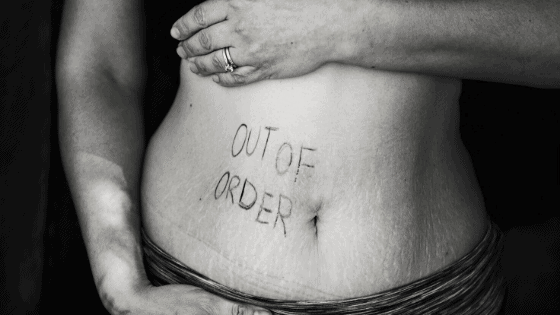
10 Apr Candida (Yeast Overgrowth) – Signs, Symptoms and How to Get it Under Control
Fungus. Kind of a gross word and thought, really. If I’m telling you about a beautifully aged French cheese you might say, “yum!” However, if I mention toe fungus, you might have a different reaction. Here’s the thing – we are all supposed to have a little bit of Candida in our gut. The problem is most of us have too much of it. Read on to learn about Candida yeast overgrowth signs, symptoms and how to get it under control.
What is Candida?
Candida is a yeast/fungus that resides in our gut lining. It is supposed to be there in the proper proportion to help us digest and absorb nutrients. When overgrowth occurs, symptoms appear. Overgrowth, also known as candidiasis or Candida Overgrowth Syndrome (COS), generally leads to yeast relocating and taking up residency in other parts of the body.
Candida Albicans is the most common yeast infection. It affects the mouth, skin, intestines, vagina, and other mucous membranes. In general, COS is not serious when your immune system is up to par. Over time, the protective lining of the gut mucosal lining (protective lining) gets broken down and leads to leaky gut when overgrowth is present.
Leaky gut allows toxins from the candida to get through to the blood and mess up your system. Eventually, you have whole molecules that shouldn’t be getting through the gut lining into the blood. This signals the immune system to attack the foreign invaders which would otherwise be filtered out or broken down further before entering the blood stream.
It’s important to note that you can have COS without having ever been diagnosed with a serious yeast infection. You may notice new food sensitivities or other environmental allergies and intolerances. The major food intolerances include dairy, egg, corn and gluten (in wheat, rye, and barley).
How Did This Happen!?
Candida is a unique and sneaky little bug! It can detect changes in temperature and acidity and adapt to those new conditions by changing its shape from round to elongated. Once the cells have penetrated the gut lining to get into the bloodstream, they begin affecting other tissues. This is why candida overgrowth symptoms have such a broad range and can affect so many body areas.
There are many things that contribute to COS. They include:
- Diet – Diets high sugar, refined carbohydrates and alcohol feed yeast.
- Antibiotic overuse – Antibiotics kill both the good and bad bacteria.
- Birth Control Pills – BPC in combination with refined sugars and antibiotics have been correlated with COS.
- Steroids – It is recommended to clean your mouth after each use of an inhaled steroid treatment to avoid oral thrush.
- Chemotherapy/Radiation – These treatments kill the good and bad cells, including bacteria.
- Diabetes – Yeast feeds on sugar and individuals with diabetes tend to have higher blood sugar levels, thus putting them at increased risk.
- Weak Immune Systems – This includes individuals with inflammatory and autoimmune conditions as well as the elderly, children and HIV/AIDS patients.
- Chronic stress – Compromises your immune system and slows your digestive tract.
Signs and Symptoms
Everyone is different, and so are the signs and symptoms of COS. A general list of symptoms include:
- Chronic Fatigue Syndrome or Fibromyalgia
- Recurring UTI, anal itching and vaginal yeast infections (note yeast can spread sexually between partners)
- Autoimmunity – Namely MS, psoriasis, lupus, UC, RA, Hashimoto’s
- Sinus infections
- Severe seasonal allergies or itchy ears
- Mood disorders including mood swings, anxiety, irritability and depression
- Brain Fog / difficulty concentrating, poor memory, ADD/ADHD
- Oral Thrush – Note the use of steroids and flushing the mouth
- Hormonal Imbalance – COS can cause early menopause, PMS, low sex drive, migraines, endometriosis, water retention, mood swings and inability to lose weight
- GI Distress
- Skin/Nail Fungal Infections
- Skin issues like eczema, psoriasis, hives, rashes
- Sugar/Carbohydrate Cravings
Testing
Testing to detect COS can be done through a stool test, serum blood test, Candida DNA test, stool PCR testing and microbial organic acid testing. The most accurate form of test is the stool test, which we can order for you at Nuvitru Wellness, so we can support your body with diet and lifestyle!
IgG, IgA and IgM candida antibody blood tests are available. Ask your doctor to test the total IgG, IgA and IgM levels in addition to the candida antibodies. Stool and urine tests tend to be more accurate and have fewer false negative results.
My Top 3 Supplements
COS is commonly treated with pharmaceuticals such as Fluconazole or Itraconazole. As stated earlier, yeast are tricky little bugs and can adapt. Thus, they can become resistant to these drugs.
I personally have tried the pharmaceuticals and had no luck with getting my dysbiosis back to normal. I prefer using a more holistic approach. There are several supplements and oils that can be used to assist with deterring yeast. I have used many things including vitamins for adrenal and immune support, coconut oil for its anti-fungal properties, prebiotics, probiotics, oregano oil and more. I think the top two most effective supplements I used include…
Caprylic Acid
Saccharomyces Boulardii
Remember, just taking supplements without changing your diet, won’t work. We have to approach this with a holistic approach (of course!). Don’t forget to book your exploration call with me, so you can partner up with a nutrition practice that specializes in gut health!
Treatment
Candida yeast overgrowth signs, symptoms and how to get it under control….the first two seem easy enough, but I’m not going to lie to you – Candida treatment is one of the hardest health protocols I’ve ever done. Treatment is intended to stop Candida overgrowth, restore the quantity of good bacteria, and to heal the gut lining to slow (or hopefully stop) future overgrowth. We do this with a simple yet comprehensive gut protocol. We tune into your diet and help you start incorporating gut supporting foods, like bone broth, and reduce the foods that trigger candida.
The struggle is REAL! Candida die-off happens. This is a good sign and it usually resolves within 7-10 days. Symptoms you might feel during treatment include:
- Brain fogginess
- Headache
- Fatigue
- Dizziness
- GI Distress (Gas, bloating, constipation, nausea)
- Fever/Sweats
- Sinus infection
- Skin breakouts anywhere on body
- Flu-like symptoms
I hope you can find some answers to live your healthiest and happiest life. If you think you have Candida yeast overgrowth signs, symptoms and want help getting it under control – give me a call! I would LOVE to help!


